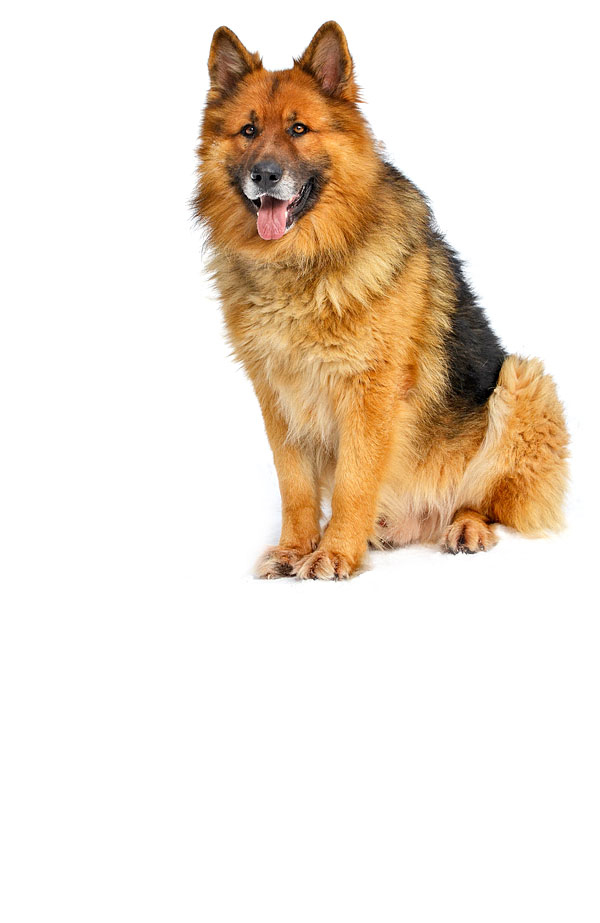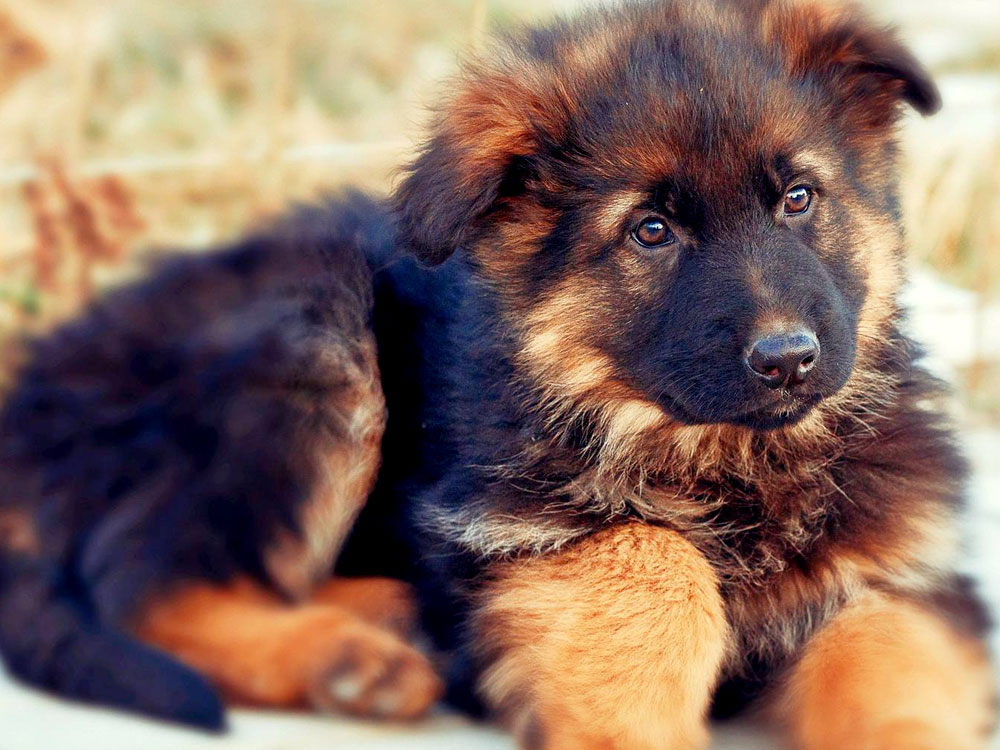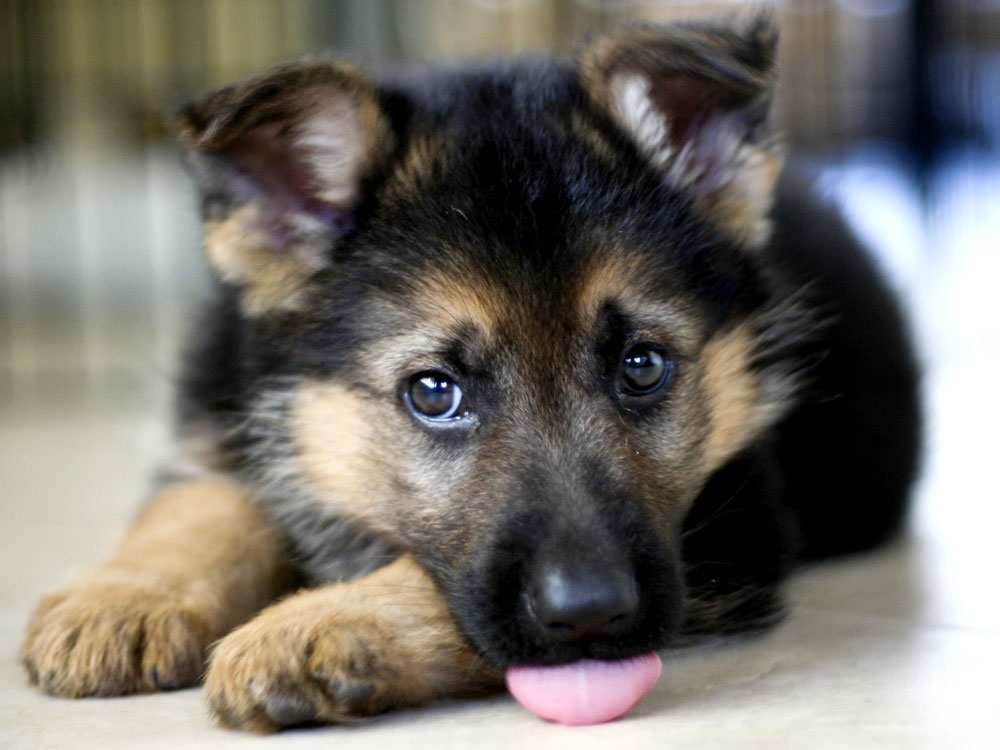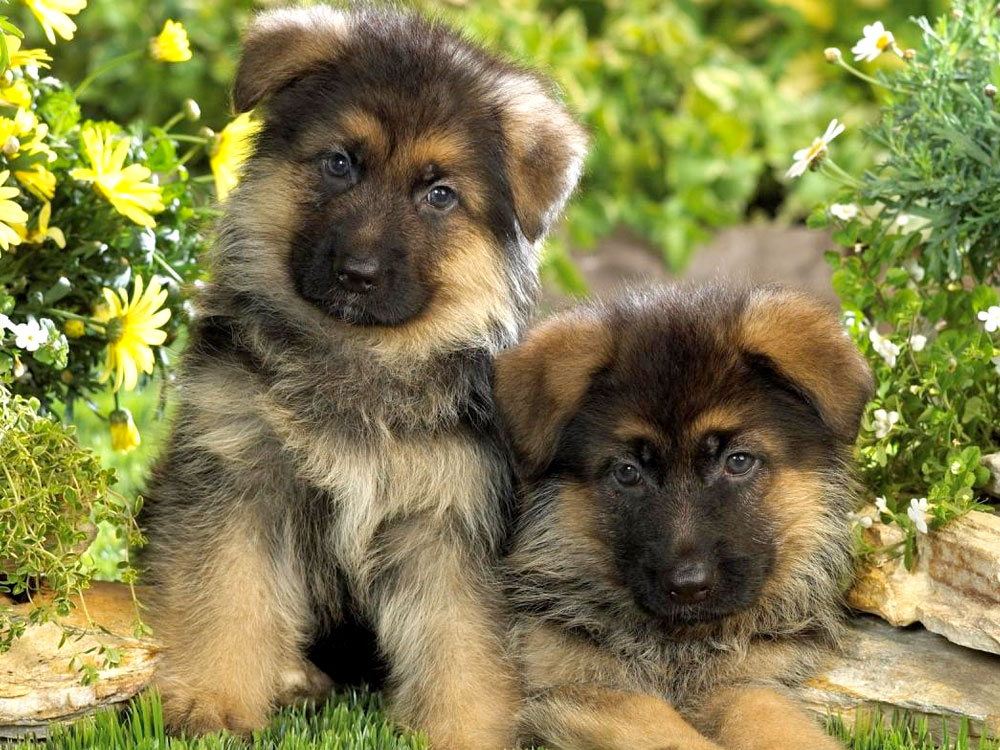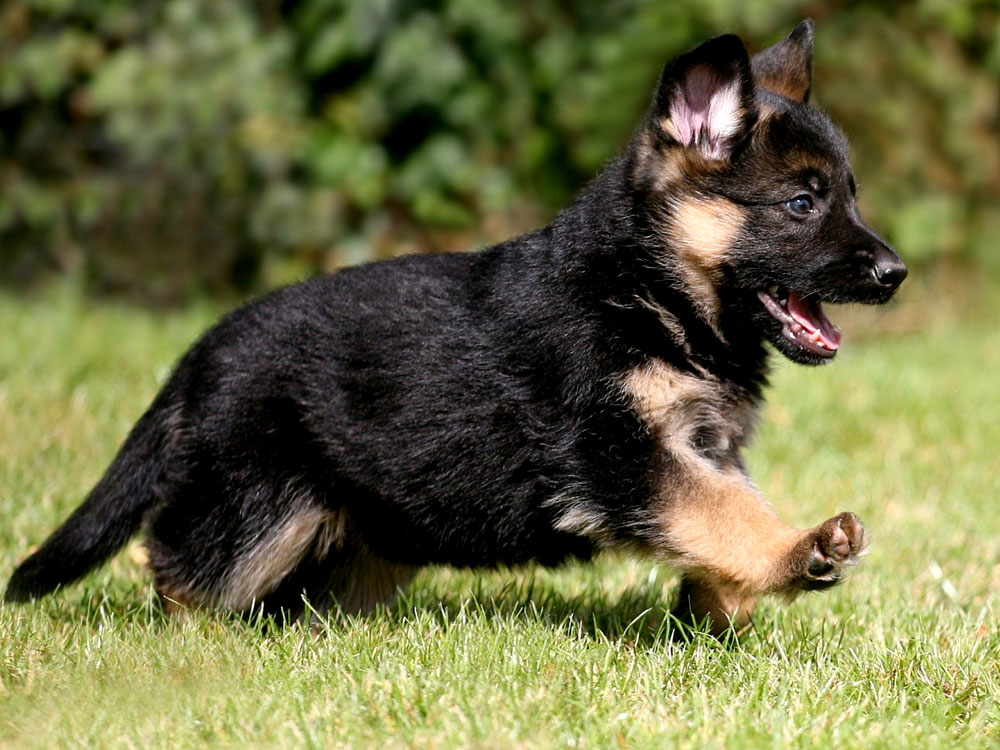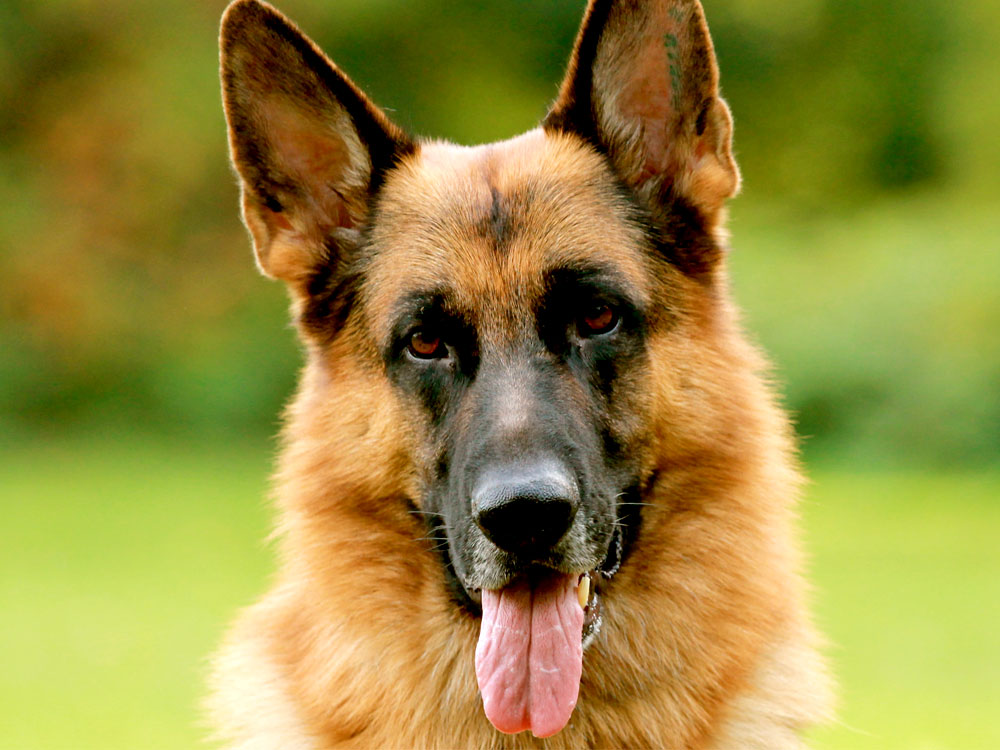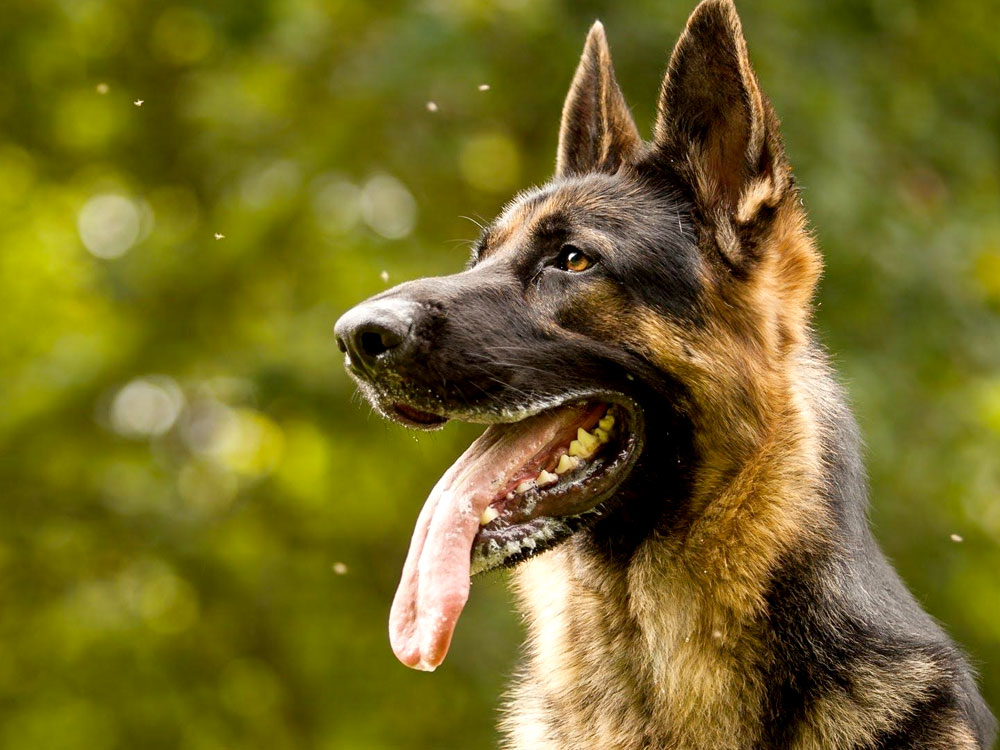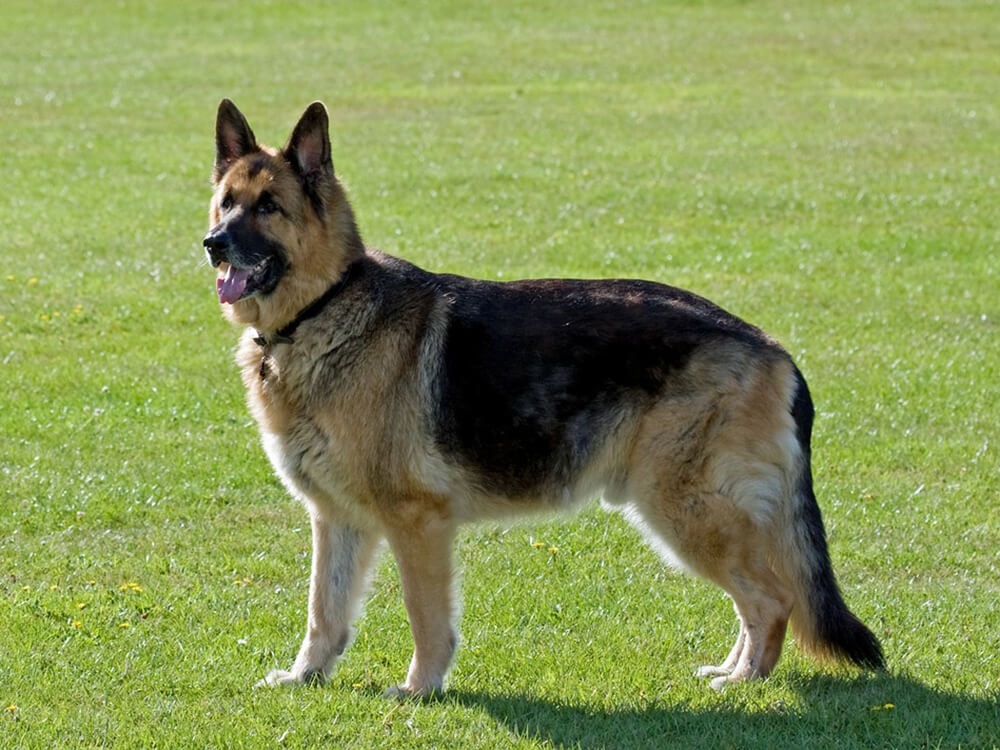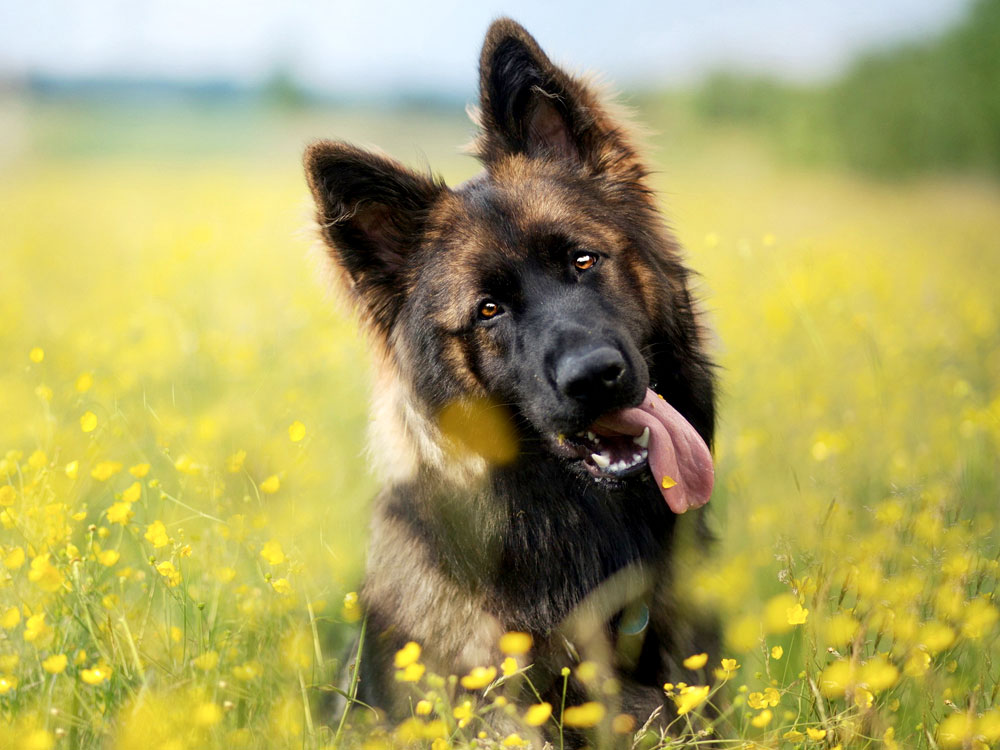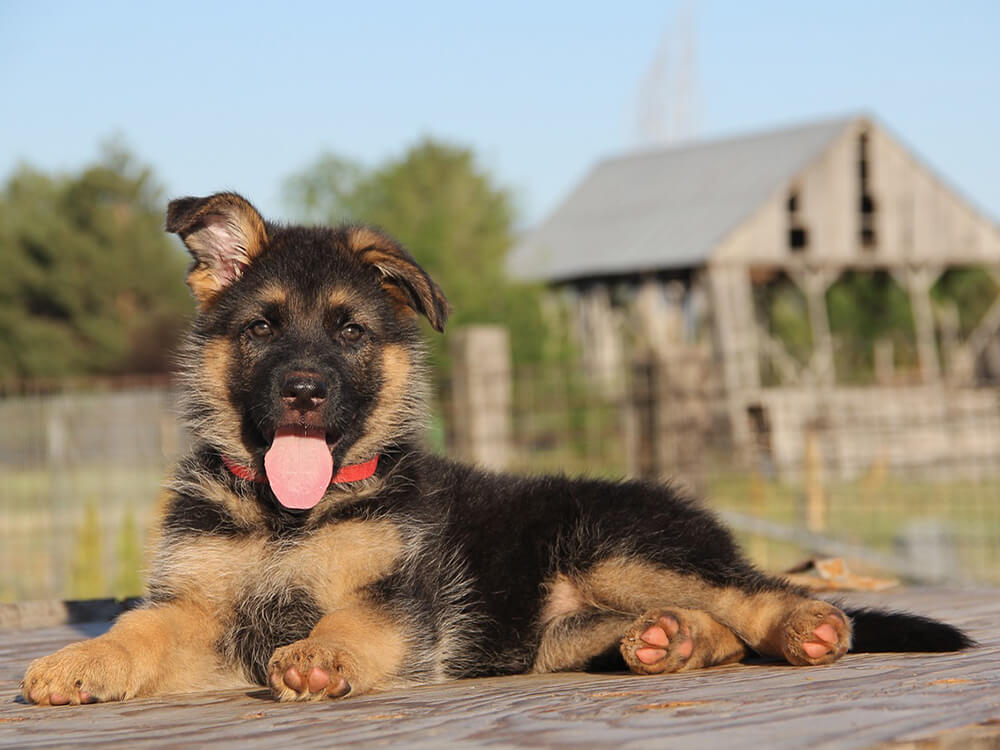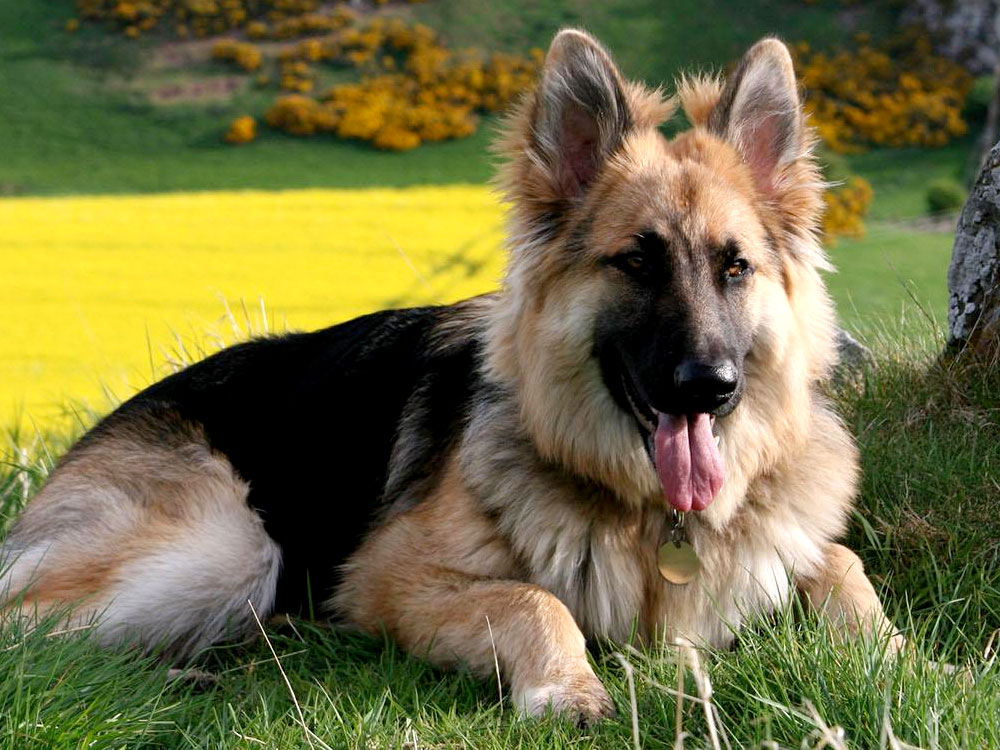
German Shepherd Breed Pictures
Vital Breed Stats
| Height: | 61 - 66 cm M | 56 - 61 cm F |
| Weight: | 35 - 39 kg M | 35 - 39 kg F |
| Breed Group: | Hound Dog Group |
| Life Expectancy: | 13 - 15 years |
| KC Registered: | No |
Breed Characteristics
| Size: |  |
| Grooming: |  |
| Exercise Level: |  |
| Barking Level: |  |
| Good with Children: |  |
| Good with other pets: |  |
| Affectionate: |  |
| Protective: |  |
| Cost to Keep: |  |
Give a thumbs up if you love the German Shepherd

0
More About the Breed
History
The German Shepherd originated in the 1800s as part of the Continental Shepherd dog found in northern Europe. In 1890, the sheepdog was divided into three separate breeds: Belgian Shepherd, Dutch Shepherd and German Shepherd. In Germany, the Phylax Society tried to standardize the German Shepherd in 1891 but disbanded for differences in principles. Some members wanted them to be bred solely for working purposes, while others wanted breeding to focus on appearance. When Germany became highly industrialised, shepherd dogs became unnecessary.
Max von Stephanitz, a former member of the Phylax Society tried to preserve the breed, focusing on its great working abilities. In 1899, he bought a high quality German Shepherd named Hektor who was very beautiful, intelligent and loyal. Hektor, a product of long generations of selective breeding, became the main point of the breeding programs of German Shepherds. He founded the Verein für Deutsche Schäferhunde (Society of the German Shepherd Dog). Hektor, changed to Horand von Grafrath, was declared the first German Shepherd and became the first member of the society. The breed is Kennel Club registered and has become a trusted working dog that assisted the police and army.
Appearance
The German Shepherd is a powerful and well-muscled canine often seen as a police or military dog. It weighs between 75 to 95 pounds, and stands 55 to 65 centimetres at the withers. It has a clean-cut head with a domed forehead, square-cut muzzle, big, erect ears, and a strongly developed jaw.
Based on the Kennel Club standards, German Shepherds come in two types of weather-resistant double coats. The first type has a straight, close-lying hair and dense outer coat, and a thick undercoat. The second type has a longer outer coat that could sometimes be wavy, which does not lie close or flat to the body, and a thick undercoat. It comes in its distinguishable colours of black with tan or gold, as well as all black and all grey. German Shepherds are heavy shedders, which is why brushing two to three times a week is a must.
Grooming
Temperament
The German Shepherd is an active, intelligent, loyal, and courageous dog. It is self-assured and it is not nervous or overaggressive. It is a challenging dog that is not recommended for new owners with a meek personality. It can be reserved and suspicious of strangers and making friends with this breed is not easy. However, when it warms up with you, it can be a devoted friend. It is protective towards its family, making it an effective watch dog.
German Shepherds can be great with kids especially if they are raised together. Nonetheless, it is not advisable for small and unruly kids as it could accidentally hurt them due to its large size. Same goes with other household pets. It can do well when other dogs and pets have been introduced while it is a puppy. Introducing a new pet to an adult German Shepherd is not a good idea when it is not used to other animals.
Intelligence
This breed is one of the most intelligent dogs in the world. As a versatile working dog, it can be trained for military service, search and rescue assistance, and drug and bomb detection. It can also be used to assist the handicapped and be a loyal companion. As a family pet, training should begin as early as eight weeks old. Sessions should focus on basic canine manners and socialisation with people and dogs so will become a well-rounded pet.
However, like humans, each breed is unique in terms of temperament and intelligence. Regardless if dogs are the same breed, their genetics, the environment they were raised in, and their training, play a significant role in developing their personality and skills.
Nutrition
As active dogs, Germans need more protein and less carbohydrates in their diet. This helps build muscles and supports their daily activity needs.
Typical calorie needs of adult German Shepherds per day:
- Senior and less active: up to 1,200 calories daily
- Typical adults: up to 1,600 calories daily
- Physically active/working dogs: up to 2,100 calories daily
Feeding
Health
Exercise
Cost of Ownership
If you’re looking to own a German Shepherd, make sure you are financially able to provide for its needs. Owning this active and highly intelligent dog will cost you around £900 to £2,000. When it comes to pet insurance, you will have to spend £22 to £85 a month. To keep up with the energy requirement of a German Shepherd, only buy the best quality dog food. This will cost you about £40 to £60 a month. Other costs to factor in are the basics such as a bed, collar, leash, regular vet exams and grooming services.
Is a German Shepherd Right for You?
- German Shepherds are extremely intelligent, easy to train and obedient.
- It is a loyal breed, very protective and trustworthy.
- When well-trained, it excels in most physical and canine activities.
- It requires a higher level of commitment, hence ideal for experienced dog owners.
- It is not fit for apartment living.
- It tends to suffer from some hereditary health disorders like Hip and Elbow Dysplasias.
